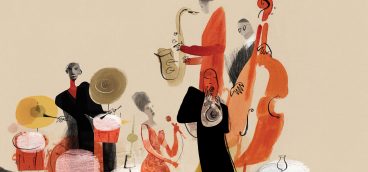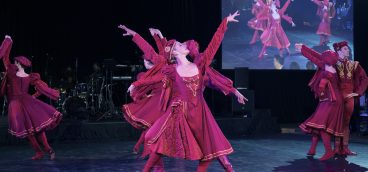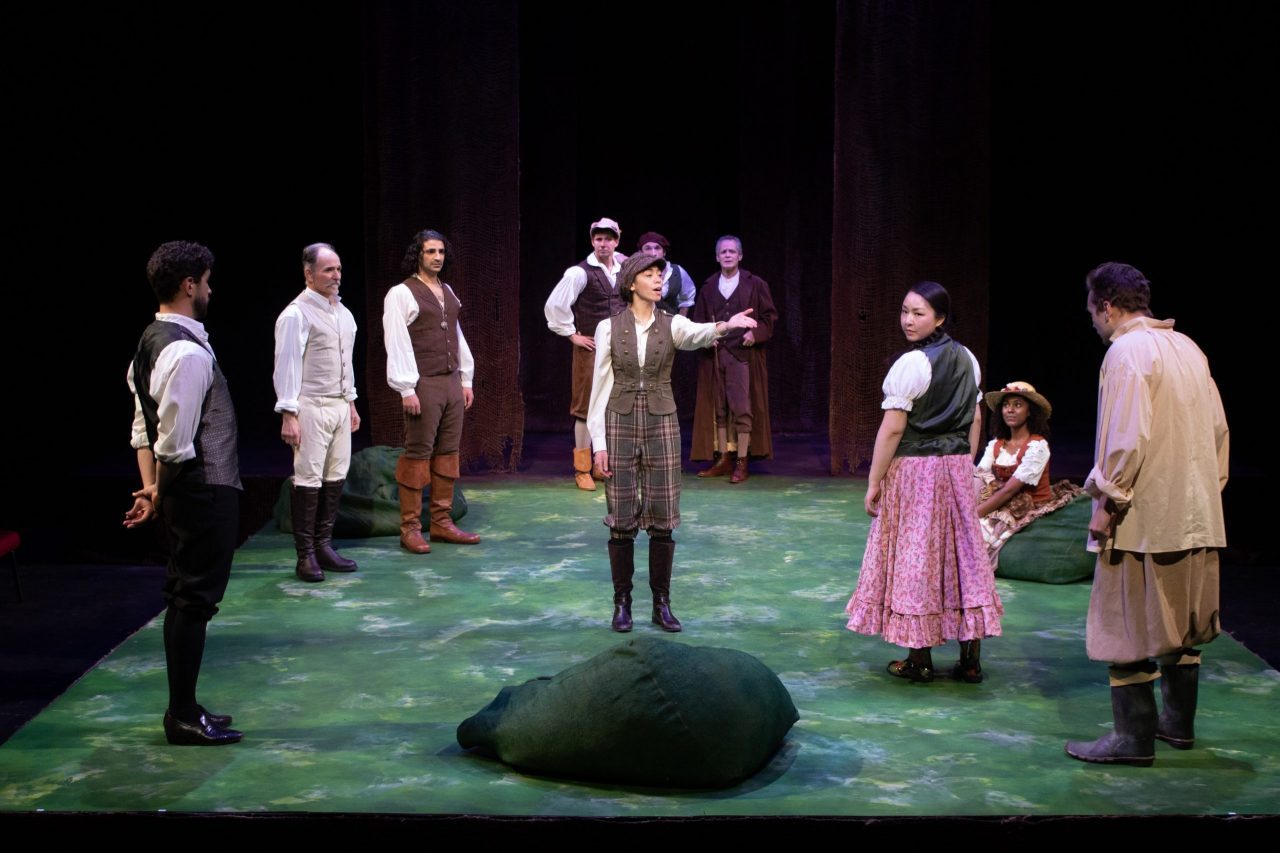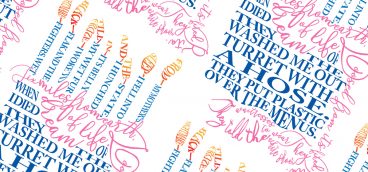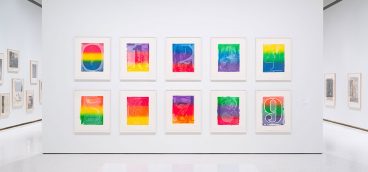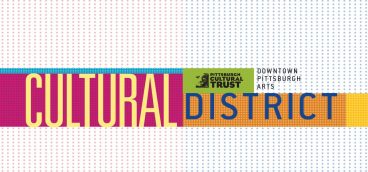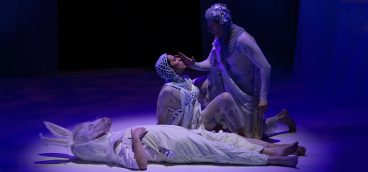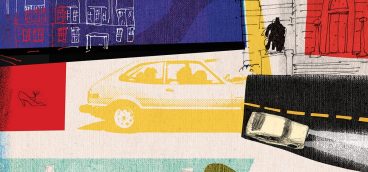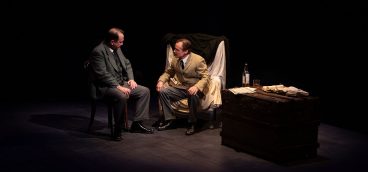The War Against Aesthetics in Contemporary Literature
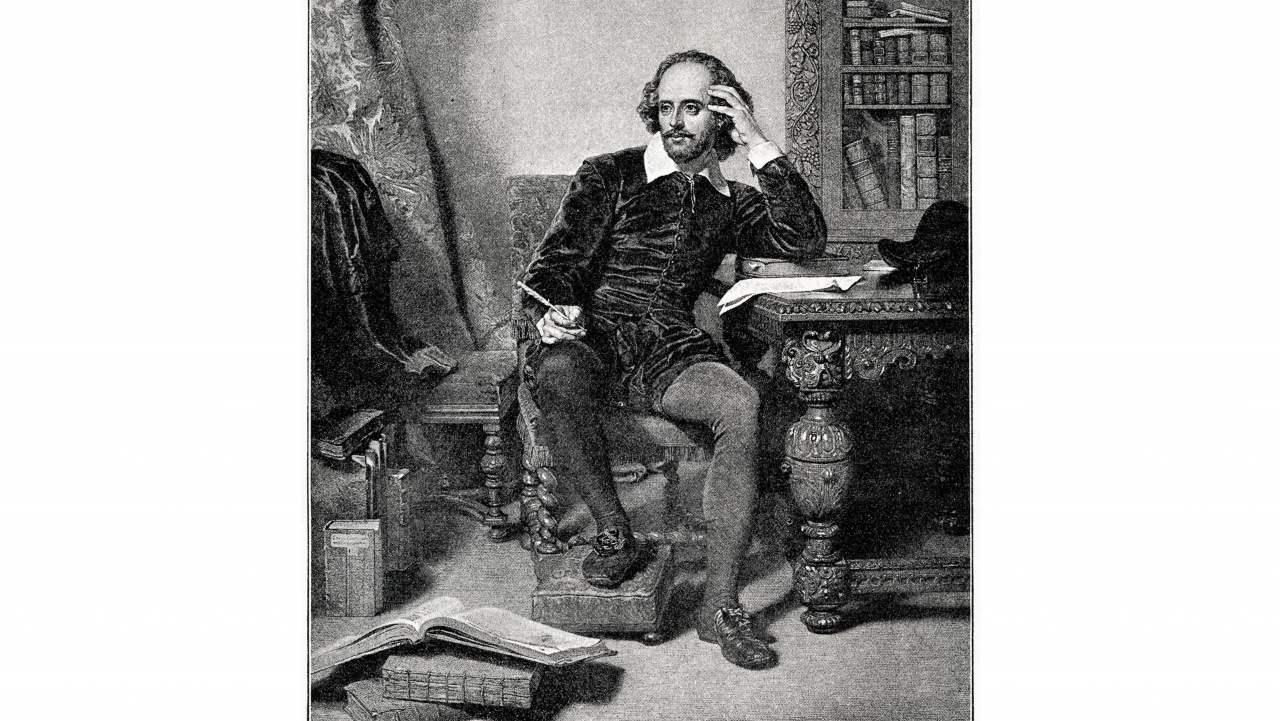
There used to be a saying in the painting department at the prestigious Rhode Island School of Design, “If you can’t make it good, make it red; if you can’t make it red, make it big,” which, as I understand, was not meant to be cynical, but to mock those attending art school for reasons other than talent. This mantra arose back in the transgressive, anything-goes, 1980s, when evidence of talent started to matter less than a purported artist’s ability to attract attention and, most important, dollars. Art at this time also became unabashedly political, and the “artist statements” mounted on gallery walls often blossomed into manifestos, telling viewers what they were supposed to see, rather than letting the works visually speak for themselves.
It could be argued that today we have a similar situation in literature, especially poetry, as we are increasingly being told that it is not important how well a poet writes; rather, the crucial issue is what a poet says.
This resonates with the progression of what might be called the emphasis of moralism over aestheticism, and which is notoriously apparent in the myriad curriculum battles, cancellations of free-thinking professors, and deplatforming of — rather than engagement with — potentially adversarial public speakers. This trend goes back to the 1990s, and the seeds of it can be found in the birth of the culture wars of the 1970s — on both sides of the political spectrum — but never has the attack on aesthetics been so virulent.
For example, the influential group #DisruptTexts, formed by four women teachers, has led an effort to cancel many “classic texts” commonly taught in American school curricula. Their mission is to “challenge the canon,” as they believe that “the classic texts function as Confederate statues,” which should be removed from classrooms, not only in America, but around the world. They further argue that these texts should be replaced by contemporary ones that manifest their sanctioned political viewpoint, which sounds a lot like the forced doctrine of Socialist Realism in art during the era of the Soviet Union. Thus, writers such as Shakespeare, Homer, Twain, Fitzgerald, Hawthorne, et al. are their chief targets, and these teachers regard the Western Canon — a collection of influential books that have withstood critical scrutiny and enjoyed readership for decades, centuries, and even millennia — as the Worst Canon.
The key paradigm shift that these “Textruptors” and their followers have achieved is to focus on and, in fact, stipulate that it is the moralistic character of literary works that matters, not the artistic merit inherent in those works. You can see this in their tendentious language choices, often utilizing technical-sounding words such as “text,” instead of something warmer, like novel or poem. It’s as if by speaking about authors they don’t approve of in clinical terms, they can be objectified, and then dismissed more readily. Here, for example, is the summation of their perspective on Shakespeare:
“Overall, we continue to affirm that there is an oversaturation of Shakespeare in our schools and that many teachers continue to unnecessarily place him on a pedestal as a paragon of what all language should be. Though we enjoy reading some of the plots in his plays and acknowledge the depth and complexity within many of his plot arcs and characters, we also find that educators are often taught to see Shakespearean plays as near perfection, his characters as ‘archetypes,’ and to persist in oj (sic) indoctrinating students into a false notion of the primacy (and superiority) of the English language. We do not see these same problematic approaches in other plays where whiteness and the male voice are not centered.”
Curiously, they have nothing to say about his poetic genius. Or his transformative impact on the evolution of the English language. Or his unparalleled universality. What they do offer is a list of specious characterizations of Shakespeare which are nothing more than straw-man fallacies.
But there is a deeper issue here being glossed over: Why have writers like Shakespeare been admired by so many for so long?
Great art is great because of its strength — not its moralism, even less so its authorship — and strong art is that which most achieves the sublime. One definition of the sublime — in its most essential form — is that it is the ineffable made effable; the inexplicable, understood. It manages to speak to the individual in the most universal, transcendent way. Thus, when we encounter Shakespeare, we recognize that he is one of the most sublime writers in the English language.
Great artists such as Shakespeare, Michelangelo, or Beethoven do not depend on conveying any message, or dogmatic truths in their works, only revelation (on the part of the creator), and recognition (on the part of the audience). Hence meaning, through the sublime, is completely open to interpretation, which makes it unattractive to coercive schools of thought.
Lorena Germán, one of the founders of #DisruptTexts, rationalizes the movement’s manipulation of the canon this way, “Did y’all know that many of the ‘classics’ were written before the 50s? Think of US society before then & the values that shaped this nation afterwards. THAT is what is in those books. That is why we gotta switch it up. It ain’t just about ‘being old.’” This kind of false logic — assuming that what is true of the whole is necessarily true of the part (which logicians call a “fallacy of division”) — leads to dichotomous curriculum choices that only serve to antagonize teachers, parents, and students. And statements such as this illustrate how the fight really isn’t about inclusion for the Textruptors; it’s about exclusion.
Perhaps a better and much simpler solution was put forth as far back as 1950 in the seminal study “The Lonely Crowd,” which suggested offering a contextual choice: “What the story of George Washington could be for a white child the story of Booker T. Washington could be for a black one.” In other words, why fight over a curriculum if the curriculum can be diverse instead of ideologically mandated?
Whereas the Textruptors denounce books on moralistic grounds, there is even a bolder — and more contumacious — school of reaction that attacks the idea of aesthetics itself. In an essay called “Ars Poetica for the Next Decade,” which appeared in this year’s May/June issue of The American Poetry Review, poet and MFA professor Christine Kitano strongly urges for the reading and evaluating of poetry on political versus aesthetic grounds. She insists that “aesthetics are never distinct from the social,” that they can never be separate from the “biographical” aspects of the poet (her euphemism for gender and race), and finally, asserts that “we define greatness as literature that, beyond mere pleasure, also instructs.” Her ire is directed at students and scholars who “evaluate art on aesthetic merit,” which ultimately is as silly as it is paradoxical. Taking the aesthetic out of art is like taking the spiritual out of religion.
Kitano’s didactic requirement of “great” poetry resonates with the need for control, which the Textruptors also evince. An art form that must instruct, or follow some external dictate, is usually weak. As the Roman poet Horace observes in his “Ars Poetica,” (the title of which Kitano appropriated for her essay):
But things entrusted to the ear
Impress our minds less vividly than what is exposed
To our trustworthy eyes so that a viewer informs himself
Of precisely what happened.
This is basically the maxim “show don’t tell,” which students hear in every introductory composition class. The first-century writer Longinus, in his influential treatise “On the Sublime,” put it this way: “Great writing does not persuade; it takes the reader out of himself.”
Even more disturbing, Kitano insists that readers interpret her poems only in the way she prescribes: “When I hear that they are reading my poem and receiving meanings I did not want or intend . . . I rearrange these words, maybe choose new words, and ideally . . . everyone reads the poem correctly.”
The contention that there is a correct way to read a poem, or a novel, or view a work of art is absurd. The fact that one of the leading literary journals in America would publish such an obtuse indictment of literary aesthetics by an MFA professor perhaps indicates why the vast majority of MFA poetry is so artless today.
French critic Maurice Blanchot in “The Space of Literature” takes a position completely antipodal to this perspective, dismissing the relevance of “biography” or authorship entirely:
“The work of art does not refer immediately back to the person who presumably made it. When we know nothing at all about the circumstances that contributed to its production, about the history of its creation — when we do not even know the name of the person who made it possible — it is then that the work comes closest to itself.”
A simple and pure idea. But is it too idealistic for our current, antagonistic literary environment when there is something potentially much larger at stake: economic interest?
Like any business segment, the publishing industry needs new products to survive. It’s hard to make money from Shakespeare or Homer these days (you can’t sell the film rights to “Hamlet”). Publishers, agents, editors, writers, and the entire literary ecosystem must generate new revenue streams. Not to mention the flood of young MFA graduates (there were 79 degree-granting programs in creative writing in 1975; by 2010 there were 854) who need to publish work to justify their degrees (and pay off those huge student loans), and the concurrent swell of new literary magazines in which to issue all this nascent work.
However, this leads to the problem of demand. If the market is saturated with products, you either must innovate to produce something that people want or go broke. The only way to convince readers to buy your books is to convince them to not spend their limited dollars on other books. Thus, again, with so much at stake in the lucrative scholastic market, one must kick Shakespeare and Homer off the shelves to make room for the new stuff. But how does one justify that, especially when competing with products that have stood the test of time? One would have to change the criteria of comparison and, moreover, invent some inherent fault to disparage the competition. Like making the charge of deficient morality, which certainly would work to the advantage of the new MFAs who, with their limited life and writing experience, might find it hard to compete on aesthetic merit.
In fact, moral indictment has been one of the most effective ways to denigrate strong and threatening modes of thought throughout history, such as accusing — and then executing — a philosopher for corrupting the minds of a city’s youth (Socrates), labeling an influential woman with countervailing spiritual teachings a prostitute (Mary Magdalene), or condemning and imprisoning a scientist whose theories threaten contemporary religious dogma (Galileo).
In addition, it should be noted that #DisruptTexts is run as a for-profit platform which generates consulting fees, book deals, and other channels of revenue for its founders. Thus, it becomes hard to deny that “replacing the canon” is just as much a capitalist, as it is a moral, endeavor.
But perhaps there is hope. Some commentators do not see the contentiousness of these cultural wars as a zero-sum game, and in fact consider the polemical crossfire to be beneficial. As scholar Amia Srinivasan suggests in a recent New Yorker essay entitled “The Sex Wars” (which reads much like Thucydides’ account of the Peloponnesian Wars), “My students soon find, in turn, that the vast body of feminist theory is riddled with disagreement. It is possible to show them that working through these ‘wars’ can be intellectually productive, even thrilling.”
We could also benefit from the extraordinary experience of al-Andalus, in medieval Spain, where for approximately seven centuries, scholars, writers, and artists came together in varying degrees of harmony to promote learning across Jewish, Arabic, and Christian traditions. It often took multiple translators working in concert to bring a lost or important text to life, from ancient Greek or Hebrew, to Latin, and then into Arabic, or in other multivarious combinations.
Al-Andalus ran like a songline through Asia, Africa, and Europe, existing more as a state of mind than a physical location, although it certainly was both. In her compelling book, “The Ornament of the World,” professor María Rosa Menocal explains, “In our casual acceptance of the notion that there is some critical or intrinsic division between Africa and Europe, we are likely to neglect just how central this southern shore of the Roman world was.” She points out how this was a time “when Jews, Christians, and Muslims lived side by side and, despite their intractable differences and enduring hostilities, nourished a complex culture of tolerance,” and furthermore notes, like feminist scholar Srinivasan, “that contradictions — within oneself, as well as within one’s culture — could be positive and productive.” Most strikingly, she concludes, “It was, in other words, a culture that rejected religious or political correctness as the basis for any sort of aesthetic or intellectual value.” It shouldn’t escape our notice that this vibrant and tolerant cross-cultural synergy produced much of what is so vehemently contested today as the Western Canon.
In another type of positive response, an attempt of compromise has arisen as various “Expand the Canon” movements proliferate across many arts organizations. Although noble-minded, history has demonstrated that a canon cannot be dictated; it can only be formed organically through time. The classical scholar M.I. Finley relates just how hard it is for canonical works to survive, especially over thousands of years:
“The names of 150 Greek authors of tragedy are known, but, apart from odd scraps quoted by later Greek or Roman authors and anthologists, the plays of only 3, Athenians of the fifth century B.C., are extant. Nor is that the end of it. Aeschylus wrote 82 plays, and we have 7 in full. Sophocles is said to have written 123, of which 7 still exist, and we can read 18 or 19 of Euripides’ 92.”
This is because “What has survived . . . was deemed worthy of being copied and recopied for hundreds of years of Greek history and then through hundreds of years more of Byzantine history, centuries in which values and fashions changed more than once, often radically.” He points out how strongly Homer, for instance, has been attacked throughout history, but has endured based on the strength of his readership. It is not up to a cultural authority, or a committee, or a for-profit online movement to shape the canon. It is up to the common reader.
Perhaps it would be most fitting to conclude this discussion with the person most responsible for the present canonical battle, the iconoclastic critic Harold Bloom, who fired the first shot with his 1994 polemic, “The Western Canon: The Books and Schools of the Ages.” (It’s no coincidence that Kitano, the MFA professor, began her piece by attacking him). Bloom’s basic premise is that “the aesthetic and the agonistic are one.” He elaborates, in direct repudiation of the Textruptors and the anti-aesthetic school:
“Tradition is not only a handing-down process of benign transmission; it is also a conflict between past genius and present aspiration, in which the prize is literary survival or canonical inclusion. That conflict cannot be settled by social concerns, or by the judgment of any particular generation of impatient idealists, or by Marxists proclaiming, ‘Let the dead bury the dead,’ or by sophists who attempt to substitute library for the Canon and the archive for the discerning spirit.”
Bloom holds true to his own theory and is not guilty of the double-standard employed by most canonical critics, as he states, emphatically, “No one has the authority to tell us what the Western Canon is, certainly not from about 1800 to the present day. It is not, it cannot be, precisely the list I give, or that anyone else might give.”
It should be noted that while many writers of diverse race and gender have been added to canonical lists, as well as to required curricula, the choice of their inclusion still feels unsatisfying to many. In a recent essay on Literary Hub entitled, “Toward an Expanded Canon of Black Literature: How Some Black Writers Live, and Some Die,” novelist Mateo Askaripour struggles to explain the dilemma of his own title:
“No, there is a deeper answer here. And it’s not that the likes of Morrison, Baldwin, or Ellison are more palatable to the average American reader’s tastes; to claim that would be both incredibly ignorant and incredibly wrong. It’s not that their work is more timely, better written, or more deserving of praise.
But I can’t tell you what the exact answer is, because I do not have it.”
The culling is as frustrating as it is mysterious. While “Expand the Canon” is a worthy and au courant sentiment, it tries to bring the endgame to the opening moves of a very long, agonistic, and iterative process. You can’t fiat a canon. Only time can, and canonical works survive based on aesthetic strength, which is eternal; not moralism, which is ephemeral. But ultimately, what is the actual importance of such a list? Why do we need a canon? Isn’t it more important that the widest diversity of writers have the opportunity to be published, which is something that we actually can engender? Askaripour concludes, with restrained optimism, “the tide is changing, and we press on.”
Homer has won his battle. So has Shakespeare. Even though people have been trying to silence their words for several millennia and centuries, respectively. But this has actually been to their benefit in the agonistic sense, as the battle never truly ends. In “Twilight of the Idols,” the German philosopher Nietzsche produced one of his most sublime aphorisms, which explains why this process is inevitable and necessary: “Out of life’s school of war — What does not kill me makes me stronger.”
All artistic creations need challenges to their vitality and relevance — such as the Textruptors and anti-aesthetes — to test and affirm what is strong within them, much like any athlete needs to be challenged by the contest of the game to truly excel. Weak works rarely survive, no matter how much propping up they may receive. Returning to the art school mantra that began this essay, the best advice to today’s MFA graduates might be, simply, “If you can’t make it good, don’t write it.”


